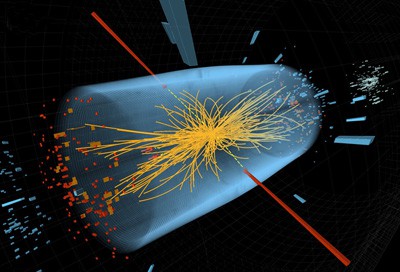Maxwell model optimizes motion energy harvesters
29 Sep 2018
Maxwell-based models
From wind and wave energy to machine vibrations and the simple act of walking down a street, mechanical movement of any kind can be fuel with the aid of triboelectric nanogenerators (TENGs). Now researchers at the University of Surrey in the UK led by S. Ravi P. Silva have used a description of TENG behaviour based on the fundamental equations of electromagnetism – the Maxwell equations – to optimize TENG designs to maximize their efficiency.
“TENGs were first invented by Prof Zhong Lin Wang’s research group at Georgia Tech,” says Ishara Dharmasena, a final year PhD student at Surrey University, and lead author of the report on these results. TENGs generate electric potentials through the transfer of electrons, charged particles or charged material as two dissimilar surfaces come into contact. Anyone who has rubbed their feet along a carpet to give their friend an electric shock will be familiar with this type of phenomenon.
In the latter half of the nineteenth century James Clerk Maxwell laid out four equations that could sum up all electrostatic and magnetic behaviour in his theory of electromagnetism. Since the invention of TENGs in 2012 it has been possible to show how their output signal relates to Maxwell’s displacement current, as Wang pointed out in Materials Today.Dharmasena and colleagues were keen to take this further.

“In my research I developed a whole theoretical framework covering these devices and then I studied how the electric fields in these devices behave using Maxwell’s equations,” Dharmasena tells Physics World. “Now in this Advanced Energy Materials paper, we used the basic theoretical model to develop and describe how the output power behaves inside a TENG device.”
In the report the researchers point out that optimizing the TENG performance requires maximizing both the source current which Is proportional to the frequency of the TENG layer movement – and matching the TENG impedance with the external load the TENG is transmitting its power to. Dharmasena describes how he characterized the output power of different TENG devices and devised a method – “TENG impedance plots” – to describe the time variant impedance and power output characteristics of these devices. Using these tools he analysed different motion parameters, including frequency, amplitude and the nature of the contact. “This basic model was expanded to analyse the effect of each motion and device parameter,” explains Dharmasena. “I then devised a rule to optimize all these parameters to make more efficient triboelectric devices.” TENG models could help optimize motion energy harvesters including wind energy.
TENG models could help optimize motion energy harvesters including wind energy.
 TENG models could help optimize motion energy harvesters including wind energy.
TENG models could help optimize motion energy harvesters including wind energy.
Getting the most bang per buck
There are a number of considerations to take into account in TENG design, and there may be limited control for some of the conditions of their operation. However, the researchers were able to highlight the benefits of higher input motion frequencies, and, amplitudes up to a saturation point. They also found that the outputs improved with the larger device size, and thinner layers, provided the layer is thick enough to hold the triboelectric charges. These criteria can help to guide the choice of device structure to optimize frequency and amplitude for a given environment such as machine vibration or vehicle movement.
Wang, the original inventor of TENGs, who was not directly involved in these latest results, commented on the importance of these results. “The displacement current was first introduced by Maxwell in 1861, which later predicted the existence of the electromagnetic wave. By adding a surface charge density contributed polarization term in the displacement current, I successfully derived the output of piezoelectric and triboelectric nanogenerators (2016). In this paper, Silva’s group has fully analysed the power output characteristics of TENGs by vigorously analysing their impedance behaviour as a function of excitation source and device parameters, which will guide the design and performance optimization of TENG. This is important progress toward the future applications of TENG.”READ MORE

Dharmasena and Silva are now working with a leading international apparel manufacturer, MAS Holdings from Sri Lanka, to develop wearable technologies based on TENGs. “We are producing fabric-based triboelectric structures using printing techniques and other mass-manufacturing techniques so we can address largescale manufacturing problems themselves,” says Dharmasena.
Challenges remain, such as the potential need to encapsulate the devices to protect them from water, as well as the issue of sporadic output, which need modifying and modulating. However, Dharmasena and Silva hope to address these issues while developing the potential application of the devices.
29/9/2018 FROM PHYSICSWORLD.COM
Δεν υπάρχουν σχόλια:
Δημοσίευση σχολίου